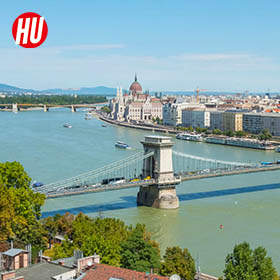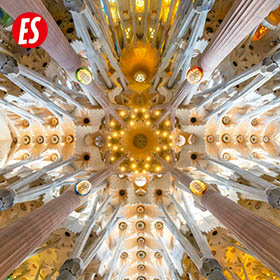
As the capital of Hungary, Budapest is a jewel on the Danube River, formed in 1873 by the merger of the cities of Buda and Pest. The 268-meter-long Hungarian Parliament Building on the bank of Danube is the symbol and emblem of Budapest, and is the second-largest parliamentary building in Europe.
The Bond Between the Twin Cities
The Danube River is the boundary between Buda and Pest. These two cities are inextricably linked by love and bonds, but are separated by a river. The completion of the Széchenyi Chain Bridge not only set up a transport link between Buda and Pest, but also the communication bridge in the hearts of the two cities. The unification of Buda and Pest finally came in 1873, which opening a new page of history of Budapest.

Danube - Budapest
The Boundary between Buda and Pest
The Danube is Europe's second longest river, it flows through Budapest, Hungary. Before the unification of Buda and Pest in the 1870s, the Danube is the boundary between them. Scattered along the Danube are landmarks such as the Hungarian Parliament building, Buda Castle, and the Fisherman's Bastion.

Szechenyi Chain Bridge
Budapest's Oldest Bridge
The Széchenyi Chain Bridge is the oldest bridge over the Danube in Budapest, built in 1840. The Széchenyi Chain Bridge is 375 meters long, with two-way traffic lanes and pedestrian walkways, from which you can look out over the Danube and its two banks. The lion statues at each of the abutments are the symbol of the bridge.

Hungarian Parliament Building
A National Landmark By the Danube
The 268-meter-long neo-Gothic Hungarian Parliament Building is the largest building in the country, located on the bank of the Danube, with a massive dome and numerous spires. The lavishly decorated interior features a domed central hall, Assembly hall and the Prime Minister's office.
Buda Castle District
The Buda Castle District is located on a hill by the Danube River, overlooking the Danube and the stunning city of Pest. Since the 13th century, Hungarian Royals have built the Buda Castle as a symbol of royal power on the hilltop, and have completed the construction and restoration of the Matthias Church. The Fisherman’s Bastion was finished in the early 20th century, providing a panoramic view of the Danube and Pest, and attracting tourists from all over the world.

Buda Castle
The Royal Castle as a Palace
Situated on the top of a hill on the west bank of the Danube, Buda Castle is a symbol of Hungarian royal power that began around the 15th century and was almost razed to the ground during World War II, and the existing buildings were rebuilt after the war. Inside Buda Castle are the Hungarian National Gallery and the Budapest History Museum.

Fisherman's Bastion
A Fairytale Castle by Danube
Completed in 1902, the Fisherman's Bastion is located on the west bank of the Danube in Budapest and features a fortress-like exterior and seven towers, symbolizing the seven first Magyar tribes that settled here. The second-floor terrace of the Fisherman's Bastion is the best place to see the Danube and the Hungarian Parliament Building.

Matthias Church
The legendary King of Hungary
Situated on the heights of the Buda Castle district, the Matthias Church, named after the Hungarian King Matthias I, has been restored and rebuilt several times since the 13th century. The Matthias Church has two towers in different styles, and the Holy Trinity Memorial Column on the west side was built to celebrate the end of the plague.
































